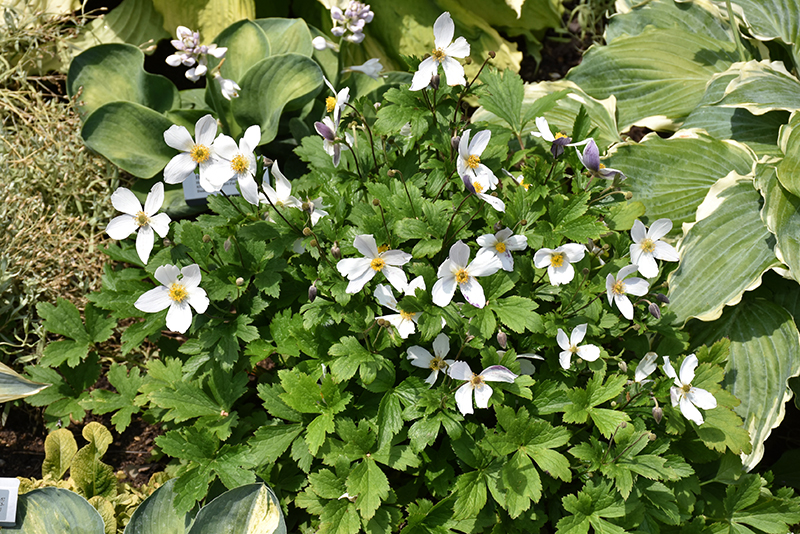VANDERMEER
PLANT LIBRARY
Find the perfect plant for your space by browsing through this extensive selection that we typically carry every year.
This library is for information purposes only.
Height: 30 inches
Spread: 18 inches
Sunlight:
![]()
![]()
Hardiness Zone: 6b
Other Names: Windflower
Description:
This variety forms a dense clump of deep green foliage in spring, then produces lovely, large white poppy-like flowers with subtle pink reverses, on tall stems all season; very pretty when massed in the garden or along borders; perfect for pollinators
Ornamental Features
Dainty Swan Anemone is smothered in stunning white buttercup flowers with yellow eyes and a shell pink reverse at the ends of the stems from late summer to early fall. The flowers are excellent for cutting. Its ferny leaves remain green in colour throughout the season.
Landscape Attributes
Dainty Swan Anemone is a dense herbaceous perennial with an upright spreading habit of growth. Its relatively fine texture sets it apart from other garden plants with less refined foliage.
This is a relatively low maintenance plant, and is best cleaned up in early spring before it resumes active growth for the season. It is a good choice for attracting bees and butterflies to your yard, but is not particularly attractive to deer who tend to leave it alone in favor of tastier treats. It has no significant negative characteristics.
Dainty Swan Anemone is recommended for the following landscape applications;
- Mass Planting
- General Garden Use
Planting & Growing
Dainty Swan Anemone will grow to be about 24 inches tall at maturity, with a spread of 18 inches. Its foliage tends to remain dense right to the ground, not requiring facer plants in front. It grows at a medium rate, and under ideal conditions can be expected to live for approximately 10 years. As an herbaceous perennial, this plant will usually die back to the crown each winter, and will regrow from the base each spring. Be careful not to disturb the crown in late winter when it may not be readily seen! As this plant tends to go dormant in summer, it is best interplanted with late-season bloomers to hide the dying foliage.
This plant does best in full sun to partial shade. It prefers to grow in average to moist conditions, and shouldn't be allowed to dry out. This plant should not require much in the way of fertilizing once established, although it may appreciate a shot of general-purpose fertilizer from time to time early in the growing season. It is not particular as to soil type or pH. It is somewhat tolerant of urban pollution. This particular variety is an interspecific hybrid. It can be propagated by division; however, as a cultivated variety, be aware that it may be subject to certain restrictions or prohibitions on propagation.





